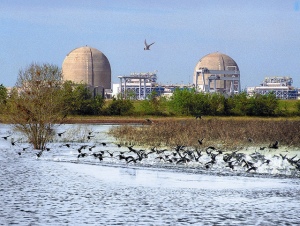Improving Our Aim for Consistent Reactor Oversight
Posted by on January 9, 2015
Director, Division of Inspection and Regional Support
Climate, geography and even accent may vary from state to state, but NRC’s regulations don’t, — and neither should our approach to applying them. So when someone suggests we might do a better job in consistently carrying out our mission, we listen carefully and act accordingly. We’ve followed this approach in following up on a September 2013 report from the Government Accountability Office (GAO).
 The GAO looked at how our Reactor Oversight Process
objectively examines reactor safety based on inspection results and
performance statistics. The report said we consistently and accurately
respond to significant issues.
The GAO looked at how our Reactor Oversight Process
objectively examines reactor safety based on inspection results and
performance statistics. The report said we consistently and accurately
respond to significant issues.The GAO found, however, that the NRC’s four regional offices produced varied results when assessing the least-significant issues, such as improper maintenance for minor electrical transformers at a plant. While this programmatic variation fell short of creating a safety issue, the report recommended we look into this inconsistency.
Staff from our Office of Nuclear Reactor Regulation studied the regions’ approach to evaluating the least safety-significant inspection findings. The study also examined regional differences in dealing with “non-escalated enforcement” matters — plants must correct these issues, but they frequently fall short of the criteria for a formal NRC finding.
The staff’s study consisted of conducting “table-top” exercises to see how each region reviewed very low-significance issues. The study listened to resident inspectors at the plants as well as region-based inspectors and their supervisors.
The staff’s study and discussions with regional management and staff, along with some employees at headquarters, led to a few conclusions. First, the staff confirmed the results of the GAO’s review that there are indeed regional differences in implementing some reactor oversight program guidance. Secondly, the NRC’s guidance could benefit from some clarification to help the inspectors when it comes to evaluating very-low-significance issues. Finally, the agency’s annual self-assessments of the entire oversight process to date have been focused on dealing with significant issues, so the assessments didn’t consider or evaluate the regional differences with the least safety-significant inspection findings. This meant the inconsistencies went on longer than they otherwise might have.
The staff’s study looked at potential causes for the varying regional approaches. One area showed the agency devotes a lot of effort to training but that training and knowledge management results weren’t always shared as widely as possible. This meant that potential inconsistencies in training across regions should be addressed. The staff’s study saw no connection between inspector experience and the regional differences.
The staff’s study showed that the NRC can improve its objectivity and predictability in dealing with very-low-significance inspection findings. Management in the Office of Nuclear Reactor Regulation will consider changes that include enhancing review procedures, standardizing inspector training and revising the self-assessment process.

No comments:
Post a Comment